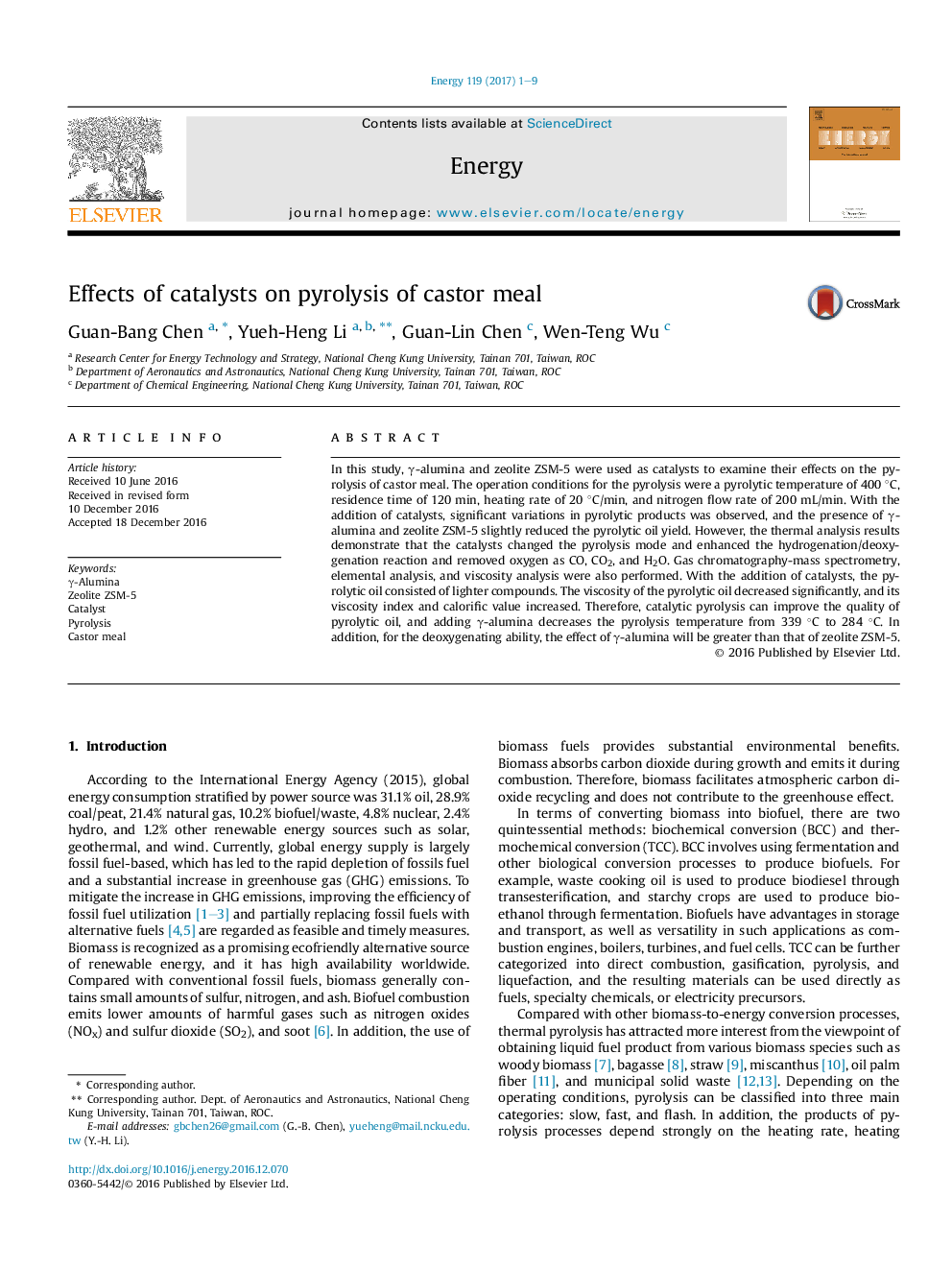| Article ID | Journal | Published Year | Pages | File Type |
|---|---|---|---|---|
| 5476858 | Energy | 2017 | 9 Pages |
Abstract
In this study, γ-alumina and zeolite ZSM-5 were used as catalysts to examine their effects on the pyrolysis of castor meal. The operation conditions for the pyrolysis were a pyrolytic temperature of 400 °C, residence time of 120 min, heating rate of 20 °C/min, and nitrogen flow rate of 200 mL/min. With the addition of catalysts, significant variations in pyrolytic products was observed, and the presence of γ-alumina and zeolite ZSM-5 slightly reduced the pyrolytic oil yield. However, the thermal analysis results demonstrate that the catalysts changed the pyrolysis mode and enhanced the hydrogenation/deoxygenation reaction and removed oxygen as CO, CO2, and H2O. Gas chromatography-mass spectrometry, elemental analysis, and viscosity analysis were also performed. With the addition of catalysts, the pyrolytic oil consisted of lighter compounds. The viscosity of the pyrolytic oil decreased significantly, and its viscosity index and calorific value increased. Therefore, catalytic pyrolysis can improve the quality of pyrolytic oil, and adding γ-alumina decreases the pyrolysis temperature from 339 °C to 284 °C. In addition, for the deoxygenating ability, the effect of γ-alumina will be greater than that of zeolite ZSM-5.
Related Topics
Physical Sciences and Engineering
Energy
Energy (General)
Authors
Guan-Bang Chen, Yueh-Heng Li, Guan-Lin Chen, Wen-Teng Wu,
